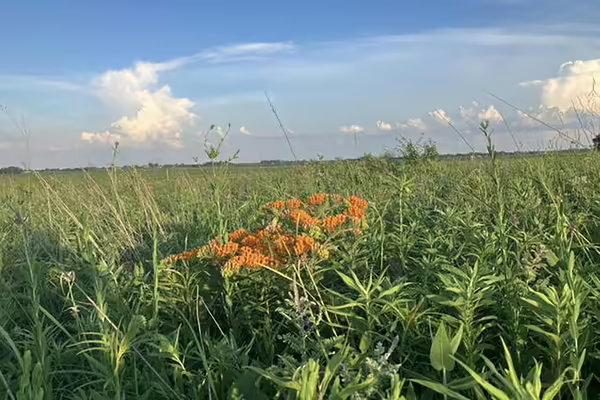
URBANA, Ill. — Imagine a prairie. How many plant species do you see? Maybe you’re picturing yellow coneflowers, some little bluestem, perhaps a few asters. But plant ecologists at the University of Illinois Urbana-Champaign say these ecosystems are much more diverse than many people realize.
Midwest plant ecology specialists Jeffrey Matthews, assistant professor in natural resources and environmental sciences, and Jack Zinnen of the Illinois Natural History Survey recently published a database of thousands of plant species found in historic prairies — and that’s just one part of their comprehensive investigation of Midwest plant biodiversity.
Prairies are one of the most endangered native ecosystems in the region — only 1% of tallgrass prairie across Illinois, Iowa, and Wisconsin has survived. To build their database, called RELIX, the team gathered and centralized existing data from studies of remnants. Remnants are small patches of ecosystems that survive otherwise widespread destruction. In this case, the researchers studied prairie remnants that have stayed relatively undisturbed since the arrival of Europeans to the continent.
Like prairies, most native wetlands, savannahs, and forests have also been degraded or destroyed. Their future depends on intentional plantings, whether that’s in nature preserves, gardens, or nature strips along roads and highways. You might even see prairie nestled between fields of corn and soy, as farmers cultivate native plants for the Conservation Reserve Program.
Whether you’re a landscaper, conservation manager, or farmer, you need to buy these plants from somewhere. This means the future of Midwestern plant ecosystems depends on seed and plant vendors. By analyzing the gaps between the plants you can get and the plants we used to have, Matthews and Zinnen hope to bring biodiversity back to the Midwest.
“Seed mixes are enormously valuable, even if they’re flawed or not very diverse,” Zinnen said. “But progress can be made by getting some more of these species in.”
Read the full article from the College of ACES.
University of Illinois Extension develops educational programs, extends knowledge, and builds partnerships to support people, communities, and their environments as part of the state's land-grant institution. Extension serves as the leading public outreach effort for University of Illinois Urbana-Champaign and the College of Agricultural, Consumer and Environmental Sciences in all 102 Illinois counties through a network of 27 multi-county units and over 700 staff statewide. Extension’s mission is responsive to eight strategic priorities — community, economy, environment, food and agriculture, health, partnerships, technology and discovery, and workforce excellence — that are served through six program areas — 4-H youth development, agriculture and agribusiness, community and economic development, family and consumer science, integrated health disparities, and natural resources, environment, and energy.